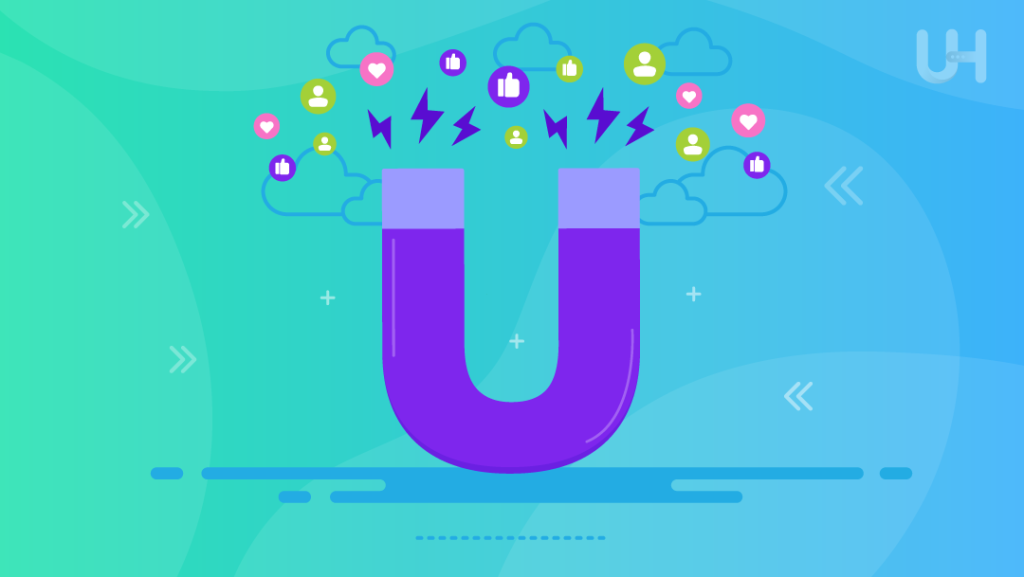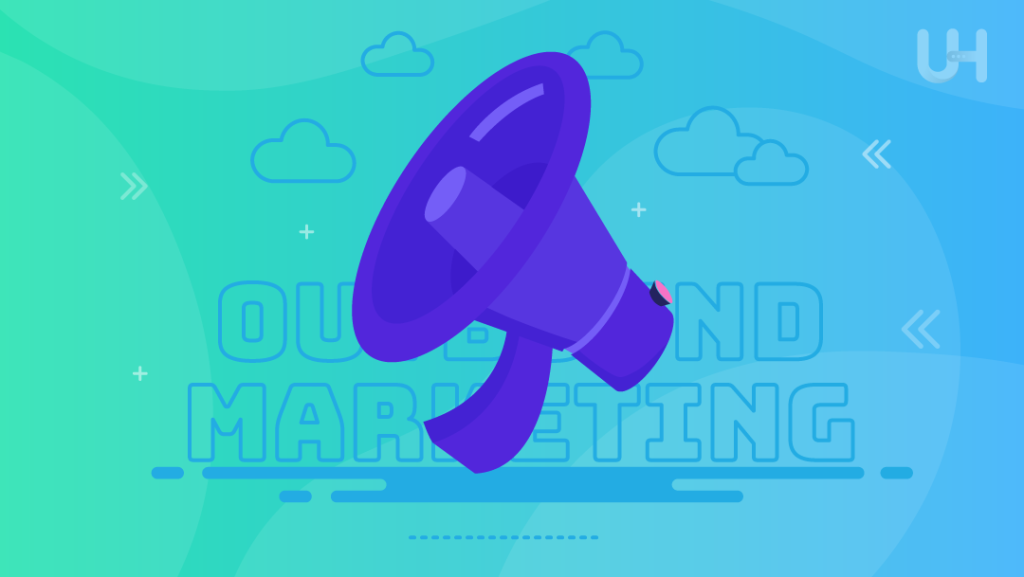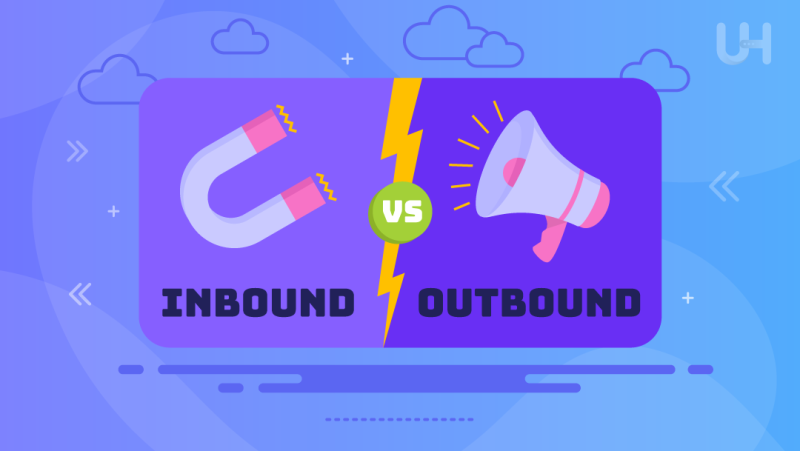Marketing strategies are fundamental to capturing and maintaining customers, especially in the advancing modern business. Two primary strategies usually govern this area: inbound vs outbound marketing. An appreciation of the differences between these strategies would help a business direct resources effectively and fine-tune campaigns toward achieving set goals.
In the following article, we will focus on critical contrasts between inbound and outbound marketing, featuring the pros and cons of both and their practical applications. By examining these facets, a business can decide which approach or combination best serves its marketing objectives.
What is Inbound Marketing?

Inbound marketing is about creating content and building a more authentic relationship with consumers. It’s about attracting customers with helpful, engaging, and quality content; the audience’s response truly determines its success.
Attributed to content marketing, inbound marketing is creating and sharing blogs, infographics, videos, podcasts, webinars, eBooks, case studies, and all other materials of value to customers before and after their purchase of any product or service.
By making an orderly body of useful and pleasurable content available, businesses can improve their brand reputation, maximize website traffic, generate social media engagement, and enhance conversion rates.
Pros of Inbound Marketing
- Non-Interruptive: Instead of swimming in and interrupting your video on YouTube or your favourite show, inbound marketing reaches consumers when they’re ready, willing, and able to engage in conversation. It’s more of an invitation rather than an intrusive announcement.
- Very Targeted: Inbound marketing provides the platform to zero in on the exact vital terms and topics your ideal customers are looking for and provide them with the right content at the right time.
- Long-Term Efficacy: One of the chief advantages of inbound marketing is that it compounds; provided you consistently update and add new content, you will have built up a continuous library of material resources to harness in many creative ways over time.
- Deeply Engaging: Content engages at a deeper level than advertising, cold calling or cold emailing. The more time people spend engaging with your brand through blogs, videos, or email, the more connected they will feel. This raises the possibility of conversion and brand loyalty or customer loyalty, making them one of your biggest fans and repeat customers.
Cons of Inbound Marketing
- Not a Quick Fix: Blog posts published yesterday do not magically trend on Google or garner thousands of visitors. SEO-driven strategies are patience-intensive and continuous in application. You have to be constantly creating, promoting, updating, optimizing, and using the best blog hosting for the content to work.
- Time-consuming: Inbound marketing has many different components that require time and skill. Running social media, email campaigns, creating content, and managing lead sources all require a lot of people and hours.
Inbound Marketing Examples
Inbound marketing encompasses various forms. Here are some commonly used content mediums that brands employ to drive their inbound marketing strategies:
- SEO-optimized content (blogs, eBooks, checklists, infographics, videos, etc.) to rank higher on search engine results pages (SERPs)
- Regular social media posts
- High-value email campaigns with the best email hosting for opt-in subscribers
- Webinars and other opt-in content types that provide enough value to encourage customers to share their information (such as names and emails)
- Referral links from related websites
Enhance Your Strategy with SEO Hosting!
Ready to leverage the power of inbound and outbound marketing? Discover how SEO hosting from UltaHost can maximize your online presence today. Propel your digital strategy forward with pre-configured setups!
What is Outbound Marketing?

Outbound marketing is when a business searches for potential customers to sell their products or services. This is probably the marketing most people consider when using the term.
In outbound marketing, a company initiates the process with prospects through cold calling, cold emailing, direct mail, print advertisements, TV and radio commercials with radio hosting, and other direct-to-consumer techniques. The idea is to break into or disturb the prospect’s routine with the marketing message.
Another characteristic of outbound marketing is its proactive nature. This means that rather than waiting for customers to come and buy certain products, businesses make efforts to spread their message to a larger audience.
Although this sector has relied heavily on outbound marketing for many decades, its efficacy has come somewhat under suspicion with the new digital technologies and changes in consumer behaviours. If strategic and targeted at the right audience, outbound marketing can significantly impact an organization.
Pros of Outbound Marketing
- Faster Turnaround: Generally, outbound marketing strategies are set up and implemented faster, requiring less research time than inbound strategies, which require years before anything can be expected out of them. The outbound methods start working much faster.
- Large Audiences: Outbound techniques allow your brand or digital products to be exposed to large audiences. Giant billboards, TV commercials, and mass cold calls or emails increase overall brand awareness by their very nature.
Cons of Outbound Marketing
- Interruptive: Outbound marketing tends to interrupt people from what they are doing—watching their favourite YouTube or TV shows, reading their favourite magazines or newspapers, or going through the mail. This is less effective and may hurt your brand when overused.
- Vague Targets: The targets for outbound marketing are not sharp. As much as you may have control over your messaging or ad placements, say, the location of billboards or channels on TV, the targeting by default is broad. Most of the people seeing your ads will be those outside your target market. This results in a low success rate of about 2.5% among cold callers.
- Challenging to Track: Measuring the success of large-scale ad campaigns, commercials, and additional outbound marketing methods is challenging. Without using discount codes or some other type of tracking tool, it’s always hard to quantify precisely how much an ad has affected your business when looking at direct results separate from general sales increases.
Outbound Marketing Examples
Examples of outbound marketing include:
- Cold-calling customers for the purpose of selling a product or service to them.
- Sending outbound emails to prospects to connect and fix a meeting.
- It involves researching and engaging prospects on social media, particularly LinkedIn.
Difference Between Inbound and Outbound Marketing
Embedded within these are some critical differences between inbound marketing and outbound marketing. Outbound marketing is when a business exerts effort on consumers to incite interest in a product. Inbound marketing creates and shares relevant content that attracts people to your website.
Outbound marketing will usually have a much harder sell and broad-reaching approach that hopes for some converts. Inbound marketing is usually much more subtle in nature, pushing an audience to purchase over time.
Here are some other differences:
| Aspect | Inbound Marketing | Outbound Marketing |
| Approach | Attracts customers by creating and sharing valuable content | Actively reaches out to customers to spark interest |
| Content-Type | Informative digital content | Non-digital content designed to sell products |
| Content Forms | Social media posts, blogs, reports, webinars, etc. | Direct mail, magazine ads, billboards, TV ads, etc. |
| Audience Targeting | Tailored to specific audiences | Broad, less targeted |
| Strategy | Comprehensive and spans multiple channels | Linear and limited to specific channels |
| Interactivity | Interactive and engaging | Generally passive |
| Measurement | Easily measurable through digital marketing tools | Difficult to measure effectiveness and attribution |
| Consumer Engagement | Aims to solve consumers’ problems and build relationships | Interrupts daily routine to capture attention |
| Effectiveness Timeline | A long-term strategy that builds over time | Can produce quicker results |
| Messaging | Subtle and informative | Aggressive and attention-grabbing |
Conclusion
The significant knowledge about the differences between inbound and outbound marketing strategies sets the basis for a successful approach in marketing. Inbound marketing is about engaging customers with relevant content—educating buyers—but nurturing relationships takes time. Outbound marketing includes a broader audience, immediate communications, and attention-catching messages. Since each has its strengths and weaknesses, combining both techniques will work best in maximizing reach and engagement. Looking at the strengths of each approach, businesses can create a complete marketing plan that yields both short-term success and long-term growth.
Understanding the differences between inbound and outbound marketing is crucial for effective strategies, especially with the UltaHost Affiliate Program. Promote a trusted service loved by millions and earn 60% commissions from monthly and yearly sales.
FAQ
What’s the main difference between inbound and outbound marketing?
Inbound marketing attracts customers with valuable content, while outbound marketing reaches out with promotional messages.
Which approach builds better long-term customer relationships?
Inbound marketing fosters trust and loyalty over time by focusing on solving problems and providing value.
Can you give examples of inbound marketing strategies?
Examples include SEO-optimized content (blogs, videos), social media engagement, downloadable resources, and informative webinars.
Is outbound marketing effective in today’s digital age?
Yes, outbound marketing can still effectively reach specific audiences when used strategically with direct mail, targeted TV ads, and personalized emails.
How can businesses combine inbound and outbound marketing?
Integrate inbound methods to attract leads and follow up with outbound techniques, such as targeted emails or direct mail, to convert them effectively.








